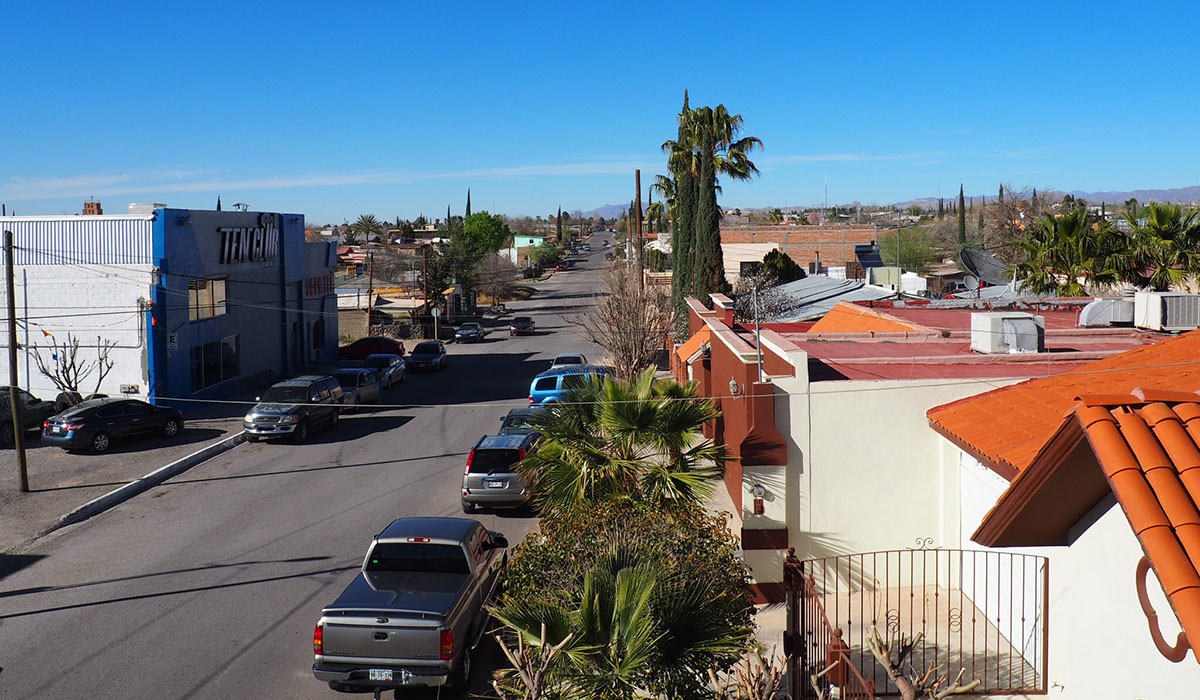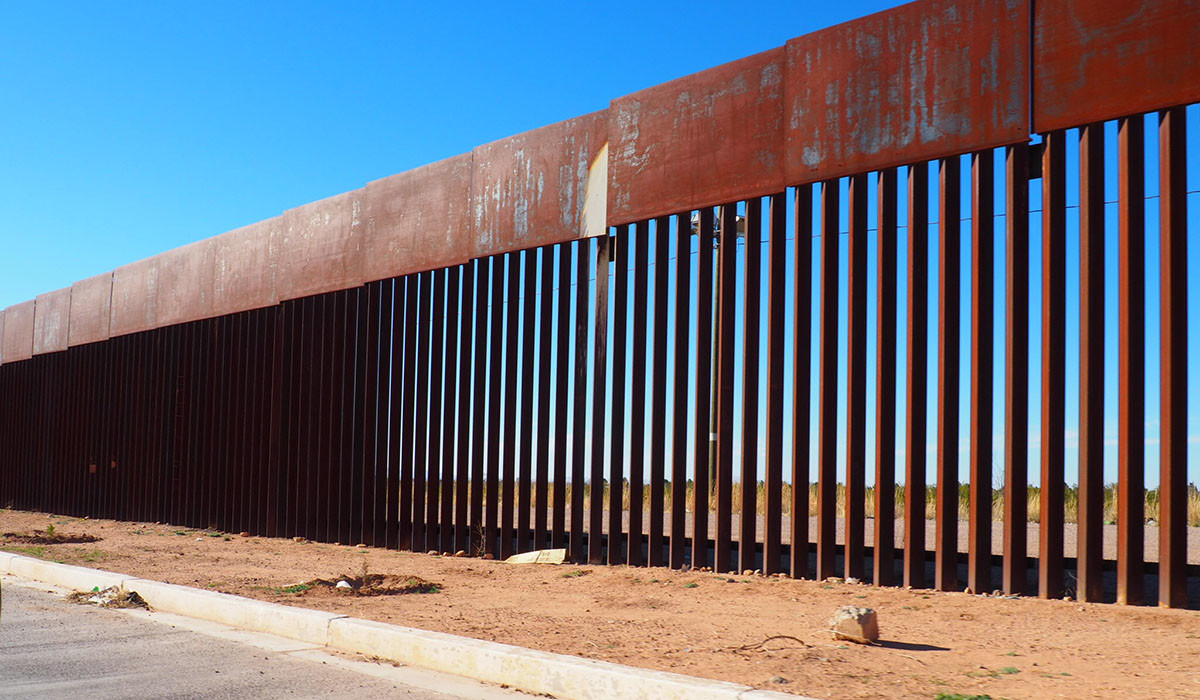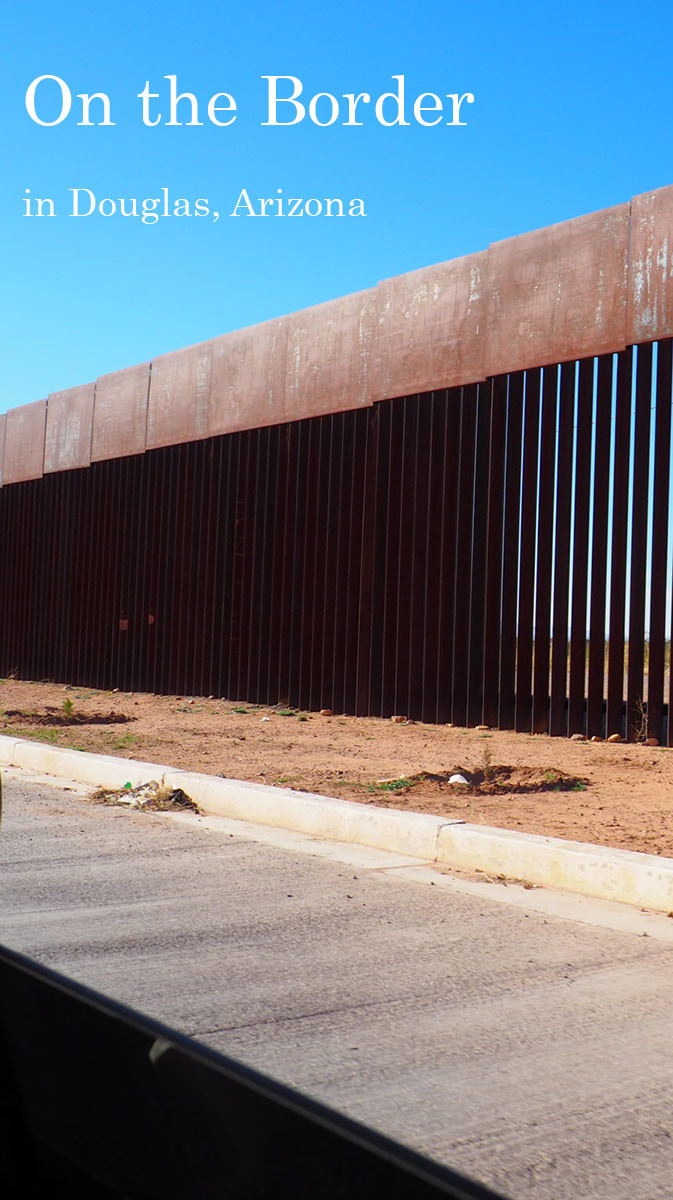“What are you doing in this lane?” a Customs and Border Patrol agent in at the crossing into Douglas, Arizona, yelled at us from outside the car. This border crossing was not like the others.
“He can’t walk,” Keoki answered from behind the wheel, gesturing toward our friend Tom in the front seat next to him. “So we decided to bring him across in the car with us.” Our driver was Keoki Skinner, an American former journalist and decades-long resident of Agua Prieta, the Mexican town just across the border. Our companion was Tom Miller, a sexagenarian writer who has lived in Tucson for much of his adult life and has written extensively about both the borderlands and the Southwest.
“This lane is for people in the SENTRI program only. You and the woman in the back seat, who isn’t registered to this car, know that.” SENTRI, or Secure Electronic Network for Travelers Rapid Inspection, is a program that enables expedited crossing from Mexico into the United States for those who must do so frequently. I knew he was wrong–I didn’t have to be registered to the car–but I also knew he could do what he wanted. The rules were different here. “I’m going to have to review your status, and we’ll decide what to do with you.”
The three of us fell silent as the agent walked away. Keoki explained that a recent tactic of Customs and Border Patrol was to cycle in “green” agents from the airports–people who had no land border experience–to keep aggression and anger high. Once someone sticks around, he tends to soften and even become sympathetic to those he sees every day, so the agency tries to keep it fresh.
It felt nerve-wracking to be on the wrong side of border patrol, even as a white American woman. I wondered what the crossing experience must be like for people who are darker–and therefore more suspicious–in the eyes of the authorities. A loss of expedited border crossing would be an inconvenience for me, but my life would go on.

“It seems I was mistaken,” the agent shouted as he approached Keoki’s car 15 minutes later. “Honestly, I didn’t really know the rules.” We let out a sigh of relief but quickly felt angry. The head agent at a border crossing didn’t know the rules?
My experience with the border is that of an outsider: I live near it, in San Diego, but I can choose to ignore it. It’s a privilege millions don’t have, with families, jobs, schools, friends, doctors and lives scattered across this very real yet frustratingly arbitrary line.
To outsiders further afield, the border is an abstract concept that bubbles up now and then after lying dormant—although these days, it’s on the tips of tongues across the country. The same themes arise each time: cartels, NAFTA, immigration without documentation, migrant workers, the role and reach of border patrol. Less discussed are the lives left in the border’s wake.
In southeastern Arizona, tensions run high, as they do near most militarized border crossings. Maybe it’s felt so strongly here because the border towns to the east of Nogales (which in turn is 100 or so miles west of Douglas) are smaller than border cities elsewhere. Or maybe, because the Sonoran desert is emptier and hotter here, it’s easier for things to intensify where there are signs of life.
Whatever the case, and whatever tensions are felt here–they aren’t new. On that warm day, I set out for Douglas from Tucson with Tom. In his book, “On the Border: Portraits of America’s Southwestern Frontier,” he details what’s now referred to as “The Hanigan Incident.” A group of ranchers in the border town of Douglas brutally tortured and almost killed three undocumented Mexican migrants who crossed their land while trying to get to the fields to look for work. This was in 1976.
Tom is unable to drive, so I took the wheel. We stopped in Bisbee, an old copper mining town that scales up and down a canyon. We descended from the mountains into a flat, scrub-dotted desert valley with mountains at the edge of the bluebird sky.
Eventually, Tom said, “See those mountains? That whole horizon is Mexico.” It was hard to believe. Where I live, you start to see signs for Mexico almost a full hour north of it. It’s significantly less populated here, but no less an international frontier. About 20 minutes later, we approached Douglas, where we passed through cattle ranches, still with no indication we were running up against another country. By this point, we could have spit across the border.
We approached a stop light in the center of this small town, which had a sign finally acknowledging Mexico’s proximity. It instructs motorists to turn right if they want to cross into Mexico, just a few hundred yards away. Driving past the Gadsden Hotel, where playwright and novelist Thornton Wilder once took a self-imposed exile, we landed at the aptly named Border Mart. Our friend Keoki appeared after a few minutes.
We climbed into Keoki’s old mustard-colored Volvo and creaked across the border without being stopped by Mexican authorities. Agua Prieta is a town of about 80,000–much bigger than Douglas’ 17,000. The economies of both towns are marked by their locations on the fence: Agua Prieta’s lifeblood is dominated by solar energy, narcos, smugglers, those who work in Arizona with or without documentation and the maquiladoras–foreign-owned factories; Douglas’ jobs are mainly in border-related law enforcement, ranching and farming. In between the two towns, a tall, perforated, rusted metal fence snakes through the desert.

As we drove around Agua Prieta, the heat and the dust seeped into every corner. I took in the architecture, which can really be better described as “narcotecture.” These days, law and order in Agua Prieta is kept in place by the Sinaloa Cartel. El Chapo used to be the biggest name in town, before he was captured. During his tenure, the cartel even provided cover for an Al Qaeda operative, whose unassuming compound still stands today. The cartel uses Agua Prieta as both a home base and jumping off point for its American business interests. Its border-beating arsenal includes tunnels, propane-fired cannons, cutting holes in the wall, rope ladders, catapults and mules–anything to get product and people across la frontera.
The cartel’s business makes lots of money, plenty of which shows up in the houses around Agua Prieta. Among more modest concrete buildings sit gaudy temples to excess that match the waves of various trends: Spanish revival, Middle Eastern–with a particular fondness for domes and minarets, and, more recently, minimalist and modern touches. All homes are heavily fortified and many sit directly at the edge of the border fence, taunting the cameras and patrol sitting mere feet away.
Back near the manned border crossing, things start to liven up. A sidewalk lining the fence was built recently, Keoki told me. Exercise apparati and benches serve as a public park of sorts. A memorial to a young adult who was shot in the back while running from American border patrol brought us back down to earth. A moment later, we saw evidence of hope in the paintings that span the entirety of the fence. Images of the desert, Catholic saints and touching hands, not unlike those painted on the roof of the Sistine Chapel, represent a humanity that’s absent on the American side of the border. Life happens, however innocent or illicit, up until the very edge of Mexico. Conversely, the hundreds of yards leading up to the wall in Douglas are completely empty: a deserted, resentful field, stretching lengthwise for miles, indicating that whatever lies just beyond it–in this case, an entire nation–is no-man’s land.
We made one final stop in Agua Prieta before crossing back into the United States: a coffee shop across the street from a gym fronted and frequented by narcos and their wives. Cafe Justo y Mas was founded by a man originally from Chiapas who wanted to start a business that could benefit those back home, so they wouldn’t feel the pull to migrate north. So far, he’s been moderately successful, selling coffee on both sides of the border that supports a stable production operation back home.
At this cafe, I bumped into an American woman who told me that they hold a vigil every Tuesday night at 5:30 for migrants who die crossing the Sonoran Desert to get to the United States. This was a Tuesday, and a quick glance at my phone revealed it was 4:15–just enough time to cross and meet up with the group.
Keoki, Tom and I jumped back into the Volvo and creaked forward once again toward the border. Being in the expedited SENTRI lane meant a short wait, one that quickly went wrong once the agent grew suspicious of us. After clearing up what border patrol called a “misunderstanding” and freshly reinstalled in the United States, Keoki and Tom deposited me on a street corner a few hundred feet from the border crossing, where the vigil was assembling. They decided to hang back and catch up, as it had been 10 years since they’d last seen one another.
Around 30 people were gathered, many visiting with an American church group, each picking up a white cross. Some crosses had the names, ages, birth and death dates of men and women, stretching back decades. Some simply said “Mujer no identificada” or “Hombre no identificado,” representing a corpse that had been found somewhere in the desert, either without identification or in such an advanced state of decay that no determination could be made.

It was rush hour, and cars began snaking down the street and around the corner, lining up to cross back into Mexico. The vigil and its crosses followed the line–under the signs warning motorists to leave their guns and medical marijuana in the United States–dropping them one by one on the edge of the sidewalk until the crosses reached the very line where one country ends and another begins. Being in one of those cars, whether crossing into Douglas or Agua Prieta, meant you had “made it” in some sense. If you kept on the straight and narrow and were lucky, you would never become one of those crosses.
I wandered back to Tom, Keoki and our car. We said our goodbyes and Keoki began his short trek back across the line into Agua Prieta. I stopped in Border Mart to get a bottle of water, overhearing a rancher at the cashier saying, “Those dickheads are at it again. Who gives a shit about some dead beaners in the desert?”
As Tom and I drove away from Douglas, we noticed a border patrol car–not a police car–sitting at a stoplight, waiting for someone to make a mistake. I continued on slowly, noticing someone with darker skin driving in a much more beat up car behind me. I tensed up. All of a sudden, the border patrol car skidded out, lights on and siren blaring, and pulled into the lane behind us. The beat up car pulled to the shoulder, beginning what was almost sure to be another tense encounter as Tom and I drove off into a cotton candy sunset.
-Words and photos by Jackie Bryant








